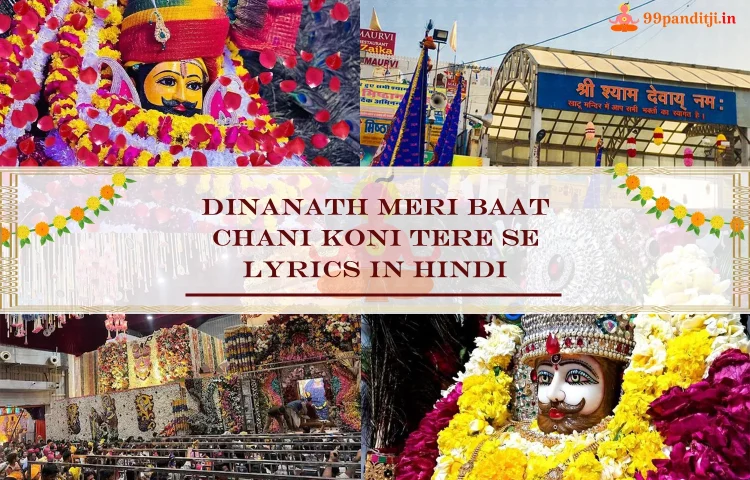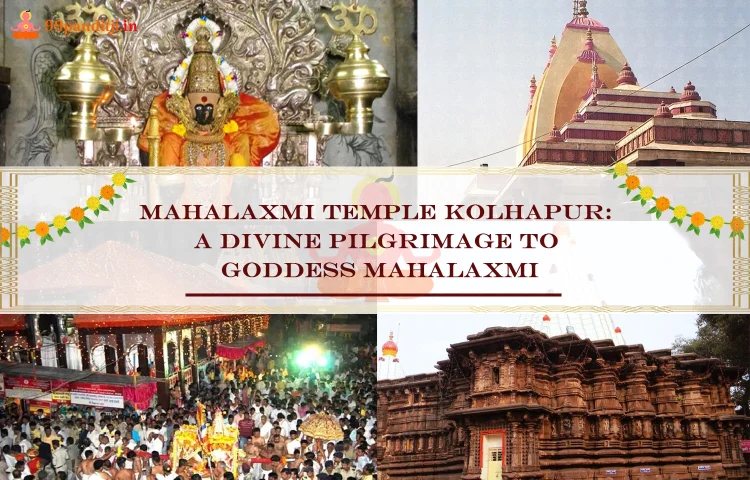Top Krishna Bhajan Lyrics In Hindi: भगवान श्री कृष्ण की दिव्य उपस्थिति से जुड़ने का एक सुंदर तरीका हैं। ये भजन भक्ति, प्रेम और सर्वोच्च देवता की स्तुति से भरे होते हैं। इन भजनों के सुखद और शांति देने वाले गीत हमें भगवान के करीब महसूस कराते हैं और आत्मा को शांति प्रदान करते हैं। इस लेख में, हम 16 कृष्ण भजन के बोल हिंदी में देखेंगे, उनके महत्व को समझेंगे और कुछ प्रमुख भजनों को उजागर करेंगे।
1. सांवरी सूरत पे मोहन लिरिक्स | Sanwali Surat Pe Mohan Lyrics
सांवरी सूरत पे मोहन,
दिल दीवाना हो गया,
दिल दीवाना हो गया मेरा,
दिल दीवाना हो गया।।
एक तो तेरे नैन तिरछे,
दुसरा काजल लगा,
तिसरा नजरें मिलाना,
दिल दीवाना हो गया।
दिल दीवाना हो गया मेरा,
दिल दीवाना हो गया।।
एक तो तेरे होँठ पतले,
दुसरा लाली लगी,
तिसरा तेरा मुस्कुरना,
दिल दीवाना हो गया।
दिल दीवाना हो गया मेरा,
दिल दीवाना हो गया।।
एक तो तेरे हाथ कोमल,
दुसरा मेहंदी लगी,
तिसरा बंसी बजाना,
दिल दीवाना हो गया।
दिल दीवाना हो गया मेरा,
दिल दीवाना हो गया।।
एक तो तेरे पाव नाजुक,
दुसरा पायल बंधी,
तिसरा घुँघरू बजाना,
दिल दीवाना हो गया।
दिल दीवाना हो गया मेरा,
दिल दीवाना हो गया।।
एक तो तेरे भोग छप्पन,
दुसरा माखन धरा,
तिसरा खीचड़े का खाना,
दिल दीवाना हो गया।
दिल दीवाना हो गया मेरा,
दिल दीवाना हो गया।।
एक तो तेरे साथ राधा,
दुसरा रुक्मणी खड़ी,
तिसरा मीरा का आना,
दिल दीवाना हो गया।
दिल दीवाना हो गया मेरा,
दिल दीवाना हो गया।
सांवरी सूरत पे मोहन,
दिल दीवाना हो गया,
दिल दीवाना हो गया मेरा,
दिल दीवाना हो गया।।
 कृष्ण भजन लिरिक्स हिंदी में भक्तों के लिए एक सुंदर साधन हैं जो उन्हें भगवान श्री कृष्ण के दर्शन की ओर अग्रसर करते हैं। “सांवरी सूरत पे मोहन” भजन इसका बेहतरीन उदाहरण है, जो कृष्ण के रूप और लीलाओं को श्रद्धा भाव से प्रस्तुत करता है।
कृष्ण भजन लिरिक्स हिंदी में भक्तों के लिए एक सुंदर साधन हैं जो उन्हें भगवान श्री कृष्ण के दर्शन की ओर अग्रसर करते हैं। “सांवरी सूरत पे मोहन” भजन इसका बेहतरीन उदाहरण है, जो कृष्ण के रूप और लीलाओं को श्रद्धा भाव से प्रस्तुत करता है।
भजन के माध्यम से भक्त अपने दिल की दीवानी भावना को व्यक्त करते हैं, जो कृष्ण के रूप, मुस्कान और उनके साथ बिताए हर पल के प्रति गहरी श्रद्धा और प्रेम से प्रेरित है। इस भजन को सुनते या गाते हुए भक्त भगवान श्री कृष्ण के साथ अपने जुड़ाव और भक्ति को महसूस करते हैं।
2. कितना प्यारा है सिंगार लिरिक्स | Kitna Pyara Hai Singar Lyrics
कितना प्यारा है सिंगार,
की तेरी लेउ नज़र उतार,
कितना प्यारा है,
ओ हो, कितना प्यारा है सिंगार,
की तेरी लेउ नज़र उतार,
कितना प्यारा है।।
सांवरिया तुमको किसने सजाया है,
तुझे सुन्दर से सुन्दर कजरा पहनाया है,
कितना प्यारा हैं सिंगार,
की तेरी लेउ नज़र उतार,
कितना प्यारा है।।
केशर चन्दन तिलक लगाकर,
सज धज कर के बैठ्यो है,
लग गए तेरे चार चाँद जो,
पहले तो निहार
कितना प्यारा है,
ओ हो, कितना प्यारा हैं सिंगार,
की तेरी लेउ नज़र उतार,
कितना प्यारा है,
सांवरिया तेरा चेहरा चमकता है
तेरा कीर्तन बहुत बड़ा,
दरबार महकता है, कितना प्यारा है,
ओ हो, कितना प्यारा हैं सिंगार,
की तेरी लेउ नज़र उतार,
कितना प्यारा है।।
किसी भगत से कह कर कान्हा,
काली टिकी लगवाले
या फिर तू बोले तो लेउ,
नूनराइ वार, कितना प्यारा है,
ओ हो, कितना प्यारा हैं सिंगार,
की तेरी लेउ नज़र उतार,
कितना प्यारा हैं,
सांवरिया तेरे भगतो को तेरी फ़िक्र
कही लग ना जाये तुझे,
दुनिया की बुरी नज़र, कितना प्यारा है,
ओ हो, कितना प्यारा हैं सिंगार,
की तेरी लेउ नज़र उतार,
कितना प्यारा है।।
पता नहीं तू किस रंग का है,
आज तलक ना जान सकी,
बनवारी हमने देखे है तेरे रंग हजार,
कितना प्यारा हैं,
ओ हो, कितना प्यारा है सिंगार,
की तेरी लेउ नज़र उतार,
कितना प्यारा है,
सांवरिया थोड़ा बच बच के रहना जी
कभी मान भी लो कान्हा,
भक्तो का कहना जी,
कितना प्यारा है,
ओ हो, कितना प्यारा हैं सिंगार,
की तेरी लेउ नज़र उतार,
कितना प्यारा है।।
सांवरिया तेरा रोज करू श्रृंगार
कभी कुटिया में मेरे,
आजाओ एक बार, कितना प्यारा है,
ओ हो, कितना प्यारा है सिंगार,
की तेरी लेउ नज़र उतार,
कितना प्यारा है।।
 कृष्ण भजन लिरिक्स हिंदी में इस भजन के माध्यम से भगवान श्री कृष्ण के रूप और श्रृंगार की पूजा की जाती है, जो भक्तों के दिलों में गहरी भक्ति और प्रेम जागृत करता है। “कितना प्यारा है सिंगार” एक सुंदर भक्ति गीत है, जो भगवान के रूप को श्रद्धा और प्रेम से गाने का एक आदर्श उदाहरण प्रस्तुत करता है।
कृष्ण भजन लिरिक्स हिंदी में इस भजन के माध्यम से भगवान श्री कृष्ण के रूप और श्रृंगार की पूजा की जाती है, जो भक्तों के दिलों में गहरी भक्ति और प्रेम जागृत करता है। “कितना प्यारा है सिंगार” एक सुंदर भक्ति गीत है, जो भगवान के रूप को श्रद्धा और प्रेम से गाने का एक आदर्श उदाहरण प्रस्तुत करता है।
भजन में कृष्ण के रूप का उल्लेख करते हुए, भक्त उनकी नज़रों से बुरी नज़र हटाने की प्रार्थना करते हैं, ताकि उनका सिंगार सुरक्षित रहे। इसके साथ ही, भक्ति भाव से कृष्ण के साथ हर पल बिताने की इच्छा और भगवान की अनमोल कृपा की कामना की जाती है।
3. श्याम चूड़ी बेचने आया लिरिक्स | Shyam Chudi Bechne Aaya Lyrics
मनहारी का भेस बनाया, श्याम चूड़ी बेचने आया।
छलिया का भेस बनाया, श्याम चूड़ी बेचने आया॥
झोली कंधे धरी, उस में चूड़ी भरी।
गलिओं में चोर मचाया, श्याम चूड़ी बेचने आया॥
राधा ने सुनी, ललिता से कही।
मोहन को तरुंत बुलाया, श्याम चूड़ी बेचने आया॥
चूड़ी लाल नहीं पहनू, चूड़ी हरी नहीं पहनू।
मुझे श्याम रंग है भाया, श्याम चूड़ी बेचने आया॥
राधा पहनन लगी श्याम पहनाने लगे।
राधा ने हाथ बढाया, श्याम चूड़ी बेचने आया॥
राधे कहने लगी, तुम हो छलिया बढे।
धीरे से हाथ दबाया, श्याम चूड़ी बेचने आया॥
 Krishna Bhajan Lyrics In Hindi भक्तों के दिलों में भगवान श्री कृष्ण के प्रेम और लीलाओं को प्रगाढ़ करने का एक सुंदर तरीका है। “श्याम चूड़ी बेचने आया” भजन कृष्ण के नटखट रूप को संगीतमय तरीके से श्रद्धा के साथ प्रस्तुत करता है।
Krishna Bhajan Lyrics In Hindi भक्तों के दिलों में भगवान श्री कृष्ण के प्रेम और लीलाओं को प्रगाढ़ करने का एक सुंदर तरीका है। “श्याम चूड़ी बेचने आया” भजन कृष्ण के नटखट रूप को संगीतमय तरीके से श्रद्धा के साथ प्रस्तुत करता है।
भजन में कृष्ण की छली मूरत को दर्शाते हुए कहा गया है कि वह छलिया का रूप धारण कर राधा के पास चूड़ियाँ बेचने आया। राधा ने इन चूड़ियों को पहनने का मन बनाया, लेकिन कृष्ण की छलका और ललिता से बातचीत के बाद वह समझ जाती हैं कि यह कृष्ण ही हैं। कृष्ण का राधा के साथ प्रेम भरा संवाद और उनकी नटखट चेष्टाओं को इस भजन में अच्छे से प्रस्तुत किया गया है।
4. लगन तुमसे लगा बैठे लिरिक्स | Lagan Tumse Lagan Laga Baithe Lyrics
लगन तुमसे लगा बैठे,
जो होगा देखा जाएगा,
तुम्हे अपने बना बैठे,
जो होगा देखा जाएगा।।
कभी दुनिया से डरते थे,
छुप छुप याद करते थे,
लो अब परदा उठा बैठे,
जो होगा देखा जाएगा।
लगन तुमसे लगा बैठें,
जो होगा देखा जाएगा,
तुम्हे अपने बना बैठे,
जो होगा देखा जाएगा।।
कभी यह ख्याल था दुनिया,
हमें बदनाम कर देगी,
शर्म अब बेच खा बैठे,
जो होगा देखा जाएगा।
लगन तुमसे लगा बैठें,
जो होगा देखा जाएगा,
तुम्हे अपने बना बैठे,
जो होगा देखा जाएगा।।
दीवाने बन गए तेरे तो फिर,
दुनिया से क्या मतलब,
तेरी गलियो में आ बैठे,
जो होगा देखा जाएगा।
लगन तुमसे लगा बैठें,
जो होगा देखा जाएगा,
तुम्हे अपने बना बैठे,
जो होगा देखा जाएगा।।
लगन तुमसे लगा बैठे,
जो होगा देखा जाएगा,
तुम्हे अपने बना बैठे,
जो होगा देखा जाएगा।।
 कृष्ण भजन लिरिक्स हिंदी में भक्तों के दिलों में कृष्ण के प्रति आस्था और भक्ति की भावना को जागृत करने का एक सुंदर साधन है। “लगन तुमसे लगा बैठे” भजन इस समर्पण और प्रेम को दर्शाता है, जो हर कृष्ण भक्त के दिल में होता है।
कृष्ण भजन लिरिक्स हिंदी में भक्तों के दिलों में कृष्ण के प्रति आस्था और भक्ति की भावना को जागृत करने का एक सुंदर साधन है। “लगन तुमसे लगा बैठे” भजन इस समर्पण और प्रेम को दर्शाता है, जो हर कृष्ण भक्त के दिल में होता है।
भजन में भक्त पहले दुनिया से डरते थे और छुप कर कृष्ण को याद करते थे, लेकिन अब वे कृष्ण के प्रति अपनी भक्ति और प्रेम को खुले तौर पर स्वीकार करते हैं। उन्होंने यह तय किया है कि चाहे जो भी हो, वे श्री कृष्ण को अपना बना लेंगे। भजन में दीवानगी और कृष्ण के प्रति एकनिष्ठ प्रेम की भावना को बहुत सुंदर तरीके से प्रकट किया गया है।
5. मेरा श्याम आजाता मेरे सामने लिरिक्स | Mera Shyam Aa Jata Lyrics
श्याम सवेरे देखु तुझको कितना सुंदर रूप है,
तेरा साथ ठंडी छाया बाकी दुनिया धूप है,
जब जब भी इसे पुकारू मै, तस्वीर को इसकी निहारू मै ,
ओ मेरा श्याम आजाता मेरे सामने,
ओ मेरा श्याम आजाता मेरे सामने||
खुश हो जाएगर सावरिया किस्मत को चमका देता,
हांथ पकडले अगर किसी का जीवन धन्यबना देता,
यह बातें सोच विचारू मै, तस्वीर को इसकी निहारू मै,
ओ मेरा श्याम आजाता मेरे सामने,
ओ मेरा श्याम आजाता मेरे सामने||
गिरने से पहले ही आकर बाबा मुझे संभालेगा,
पूरा है विश्वास है कभी तू तूफ़ानो से निकालेगा,
ये तनमन तुझपे वारु मै, तस्वीर को इसकी निहारू मै,
ओ मेरा श्याम आजाता मेरे सामने,
ओ मेरा श्याम आजाता मेरे सामने||
श्याम के आगे मुझको तो ये दुनिया फिकी लगती है,
जिस मोह में और जान है वो इतनी नजदीकी लगती है,
अपनी तक़दीर सवांरु मै, तस्वीर को इसकी निहारू मै,
ओ मेरा श्याम आजाता मेरे सामने,
ओ मेरा श्याम आजाता मेरे सामने||
 Krishna Bhajan Lyrics In Hindi इस भजन के माध्यम से भगवान श्री कृष्ण की महिमा को उच्चारित किया गया है, जो भक्तों के दिलों में शांति, प्रेम और समर्पण का अहसास कराता है। “मेरा श्याम आजाता मेरे सामने” भजन, भक्तों के जीवन में कृष्ण की उपस्थिति को एक गहरी भावनात्मक और आध्यात्मिक अनुभव बनाता है।
Krishna Bhajan Lyrics In Hindi इस भजन के माध्यम से भगवान श्री कृष्ण की महिमा को उच्चारित किया गया है, जो भक्तों के दिलों में शांति, प्रेम और समर्पण का अहसास कराता है। “मेरा श्याम आजाता मेरे सामने” भजन, भक्तों के जीवन में कृष्ण की उपस्थिति को एक गहरी भावनात्मक और आध्यात्मिक अनुभव बनाता है।
भजन के बोल में यह दर्शाया गया है कि जब भक्त भगवान श्री कृष्ण को अपने सामने पाते हैं, तो सारी दुनिया की परेशानियाँ और समस्याएँ फीकी पड़ जाती हैं। कृष्ण का साथ उनके जीवन में ठंडी छाया की तरह है, जो उन्हें हर दर्द और दुख से बचाता है। भक्त भगवान श्री कृष्ण के प्रति अपनी निष्ठा और भक्ति को महसूस करते हुए कहते हैं कि वे किसी भी मुश्किल में अपने श्याम पर विश्वास रखते हैं, जो उन्हें हर तूफान से बाहर निकालते हैं।
6.मेरा आपकी कृपा से सब काम हो रहा है लिरिक्स | Mera Aapki Kripa Se,Sab Kaam Ho Raha Hai Lyrics
मेरा आपकी कृपा से सब काम हो रहा है,
करते हो तुम कन्हैया मेरा नाम हो रहा है||
पतवार के बिना ही मेरी नाव चल रही है,
बिन मांगे हे कन्हैया हर चीज मिल रही है||
अब क्या बताऊ मोहन आराम हो रहा है,
मेरा आपकी कृपा से सब काम हो रहा है||
मेरी जिंदगी में तुम हो किस बात की कमी है,
मुझे और अब किसी की परवाह भी नही है||
तेरी बदौलतो से सब काम हो रहा है,
मेरा आपकी कृपा से सब काम हो रहा है||
दुनिया में होंगे लाखो तेरे जैसा कौन होंगा,
तुज जैसा बंदा परवर भला ऐसा कौन होगा||
अरे थामा है तेरा दामन आराम हो रहा है,
मेरा आपकी कृपा से सब काम हो रहा है||
 कान्हा भजन लिरिक्स हिंदी में इस भजन के माध्यम से भगवान श्री कृष्ण की कृपा और उनके आशीर्वाद की शक्ति को महसूस किया जाता है, जो भक्तों के जीवन को सकारात्मक और संतुलित बनाती है। “मेरा आपकी कृपा से सब काम हो रहा है” भजन भक्तों के दिलों में श्री कृष्ण के प्रति असीम प्रेम और श्रद्धा का संचार करता है।
कान्हा भजन लिरिक्स हिंदी में इस भजन के माध्यम से भगवान श्री कृष्ण की कृपा और उनके आशीर्वाद की शक्ति को महसूस किया जाता है, जो भक्तों के जीवन को सकारात्मक और संतुलित बनाती है। “मेरा आपकी कृपा से सब काम हो रहा है” भजन भक्तों के दिलों में श्री कृष्ण के प्रति असीम प्रेम और श्रद्धा का संचार करता है।
भजन के बोल में यह भाव व्यक्त किया गया है कि भक्त को अब किसी और चीज की कोई चिंता नहीं है क्योंकि उनका जीवन श्री कृष्ण की कृपा से पूरी तरह से संपूर्ण हो चुका है। वे महसूस करते हैं कि भगवान कृष्ण के आशीर्वाद से उनके जीवन में कोई कमी नहीं है और उन्हें किसी और की परवाह नहीं है।
7.काली कमली वाला मेरा यार है लिरिक्स | Kali Kamli Wala Mera Yaar Hai Lyrics
काली कमली वाला मेरा यार है,
मेरे मन का मोहन तु दिलदार है,
तु मेरा यार है, मेरा दिलदार है ॥
मन मोहन मैं तेरा दीवाना,
गाउँ बस अब यही तराना,
श्याम सलोने तू मेरा रिजवार है,
मेरे मन का मोहन तु दिलदार है ॥
तु मेरा मैं तेरा प्यारे,
यह जीवन अब तेरे सहारे,
हाथ तेरे इस जीवन की पतवार है,
मेरे मन का मोहन तु दिलदार है ॥
पागल प्रीत की एक ही आशा,
दर्दे दिल दर्शन का प्यासा,
तेरे हर वादे पे मुझे ऐतबार है,
मेरे मन का मोहन तु दिलदार है ॥
तुझको अपना मान लिया है,
यह जीवन तेरे नाम किया है,
चित्र विचित्र को बस तुमसे ही प्यार है,
मेरे मन का मोहन तु दिलदार है ॥
काली कमली वाला मेरा यार है,
मेरे मन का मोहन तु दिलदार है,
तु मेरा यार है, मेरा दिलदार है ॥
 Kanha Bhajan Lyrics In Hindi इस भजन के माध्यम से भक्तों के दिलों में भगवान श्री कृष्ण के प्रति एक गहरा प्रेम और समर्पण उत्पन्न होता है। “काली कमली वाला मेरा यार है” भजन कृष्ण के प्रेम और आशीर्वाद को मान्यता देते हुए उनके साथ आत्मीय जुड़ाव का अहसास कराता है।
Kanha Bhajan Lyrics In Hindi इस भजन के माध्यम से भक्तों के दिलों में भगवान श्री कृष्ण के प्रति एक गहरा प्रेम और समर्पण उत्पन्न होता है। “काली कमली वाला मेरा यार है” भजन कृष्ण के प्रेम और आशीर्वाद को मान्यता देते हुए उनके साथ आत्मीय जुड़ाव का अहसास कराता है।
भजन में कहा गया है कि भगवान कृष्ण ही उनके मन के मोहन हैं, जिनके प्रेम में वे दीवाने हैं और जिनकी कृपा से उनका जीवन सशक्त और सुरक्षित है। कृष्ण के वादों पर उन्हें पूरा विश्वास है और उनका हर कदम जीवन को सही दिशा में ले जाता है।
8.यशोमती मैया से बोले नंदलाला लिरिक्स | Yashomati Maiya Se Bole Nandlala Lyrics
यशोमती मैया से बोले नंदलाला,
यशोमती मैया से बोले नंदलाला,
राधा क्यों गोरी मैं क्यों काला,
राधा क्यों गोरी ||
ओ ओ ओ,
यशोमती मैया से बोले नंदलाला,
राधा क्यों गोरी मैं क्यों काला,
बोली मुस्काती मैया ललन को बताया,
काली अंधियरी आधी रात में तू आया ||
लाडला कंहैया मेरा ओ,
लाडला कंहैया मेरा काली कमली वाला,
इसी लिए काला,
यशोमती मैया से बोले नंदलाला,
राधा क्यों गोरी मैं क्यों काला,
राधा क्यों गोरी मैं क्यों काला ||
बोली मुस्काती मैया सुन मेरे प्यारे,
बोली मुस्काती मैया सुन मेरे प्यारे,
गोरी गोरी राधिका के नैन कजरारे,
काले नैनों वाली ने ओ,
काले नैनों वाली ने ऐसा जादू डाला,
इसी लिए काला ||
यशोमती मैया से बोले नंदलाला,
राधा क्यों गोरी मैं क्यों काला,
राधा क्यों गोरी मैं क्यों काला ||
 Krishna Bhajan Lyrics In Hindi के इस भजन के माध्यम से भक्त भगवान श्री कृष्ण की दिव्यता और राधा के प्रति उनके प्रेम को महसूस करते हैं। “यशोमती मैया से बोले नंदलाला” कृष्ण के रूप में खेल, प्रेम और समर्पण का एक अद्भुत उदाहरण है, जो भक्तों के दिलों में भगवान के प्रति गहरी भक्ति और श्रद्धा उत्पन्न करता है।
Krishna Bhajan Lyrics In Hindi के इस भजन के माध्यम से भक्त भगवान श्री कृष्ण की दिव्यता और राधा के प्रति उनके प्रेम को महसूस करते हैं। “यशोमती मैया से बोले नंदलाला” कृष्ण के रूप में खेल, प्रेम और समर्पण का एक अद्भुत उदाहरण है, जो भक्तों के दिलों में भगवान के प्रति गहरी भक्ति और श्रद्धा उत्पन्न करता है।
भजन में भगवान श्री कृष्ण के रूप और राधा के प्रति उनके विशेष प्रेम को सुंदर रूप में दर्शाया गया है। यह भजन कृष्ण और राधा के अद्वितीय प्रेम और उनके अलग-अलग रूपों को समझाने की कोशिश करता है।
9.एक राधा एक मीरा लिरिक्स | Ek Radha Ek Meera Lyrics
एक राधा एक मीरा,
दोनों ने श्याम को चाहा,
अंतर क्या दोनों की चाह में बोलो,
एक प्रेम दीवानी एक दरस दीवानी ।
एक राधा एक मीरा,
दोनों ने श्याम को चाहा,
अंतर क्या दोनों की चाह में बोलो,
एक प्रेम दीवानी एक दरस दीवानी ।
राधा ने मधुबन में ढूँढा,
मीरा ने मन में पाया,
राधा जिसे खो बैठी वो गोविन्द,
मीरा हाथ बिक आया,
एक मुरली एक पायल,
एक पगली एक घायल,
अंतर क्या दोनों की प्रीत में बोलो,
अंतर क्या दोनों की प्रीत में बोलो,
एक सूरत लुभानी एक मूरत लुभानी,
एक सूरत लुभानी एक मूरत लुभानी,
एक प्रेम दीवानी एक दरस दीवानी ।
मीरा के प्रभु गिरिधर नागर,
राधा के मनमोहन,
सा गा मा पा धा
पा धा मा पा रे मा गा
धा रे सा नि धा रे रे गा मा
गा पा मा पा धा पा सा नी सा रे आ…
मीरा के प्रभु गिरिधर नागर,
राधा के मनमोहन,
राधा नित श्रृंगार करे और,
मीरा बन गयी जोगन,
एक रानी एक दासी,
दोनों हरी प्रेम की प्यासी,
अंतर क्या दोनों की तृप्ति में बोलो,
अंतर क्या दोनों की तृप्ति में बोलो,
एक जीत न मानी एक हार न मानी,
एक जीत न मानी एक हार न मानी,
एक प्रेम दीवानी एक दरस दीवानी ।
एक राधा एक मीरा,
दोनों ने श्याम को चाहा,
अंतर क्या दोनों की चाह में बोलो,
एक प्रेम दीवानी एक दरस दीवानी ।
 Krishna bhajan lyrics में राधा और मीरा का श्री कृष्ण के प्रति प्रेमभाव दर्शाया गया हैं। यह भजन भक्त और भगवान् के सम्बन्ध को दिव्य रूप से प्रदर्शित करता है। भजन के माध्यम से बताया गया है कि भगवान को भक्ति के मार्ग पर चलकर पाया जा सकता है, जैसे मीरा जी ने मन में भक्ति करके कृष्ण जी को पा लिया था।
Krishna bhajan lyrics में राधा और मीरा का श्री कृष्ण के प्रति प्रेमभाव दर्शाया गया हैं। यह भजन भक्त और भगवान् के सम्बन्ध को दिव्य रूप से प्रदर्शित करता है। भजन के माध्यम से बताया गया है कि भगवान को भक्ति के मार्ग पर चलकर पाया जा सकता है, जैसे मीरा जी ने मन में भक्ति करके कृष्ण जी को पा लिया था।
10.किशोरी कुछ ऐसा इंतजाम हो जाए लिरिक्स | Kishori Kuch Aisa Intjam Ho Jaye Lyrics
किशोरी कुछ ऐसा इंतजाम हो जाए।
जुबा पे राधा राधा राधा नाम हो जाए॥
जब गिरते हुए मैंने तेरे नाम लिया है।
तो गिरने ना दिया तूने, मुझे थाम लिया है॥
तुम अपने भक्तो पे कृपा करती हो, श्री राधे।
उनको अपने चरणों में जगह देती हो श्री राधे।
तुम्हारे चरणों में मेरा मुकाम हो जाए॥
मांगने वाले खाली ना लौटे, कितनी मिली खैरात ना पूछो।
उनकी कृपा तो उनकी कृपा है, उनकी कृपा की बात ना पूछो॥
ब्रज की रज में लोट कर, यमुना जल कर पान।
श्री राधा राधा रटते, या तन सों निकले प्राण॥
गर तुम ना करोगी तो कृपा कौन करेगा।
गर तुम ना सुनोगी तो मेरी कौन सुनेगा॥
डोलत फिरत मुख बोलत मैं राधे राधे, और जग जालन के ख्यालन से हट रे।
जागत, सोवत, पग जोवत में राधे राधे, रट राधे राधे त्याग उरते कपट रे॥
लाल बलबीर धर धीर रट राधे राधे, हरे कोटि बाधे रट राधे झटपट रे।
ऐ रे मन मेरे तू छोड़ के झमेले सब, रट राधे रट राधे राधे रट रे॥
श्री राधे इतनी कृपा तुम्हारी हम पे हो जाए।
किसी का नाम लूँ जुबा पे तुम्हारा नाम आये॥
वो दिन भी आये तेरे वृन्दावन आयें हम, तुम्हारे चरणों में अपने सर को झुकाएं हम।
ब्रज गलिओं में झूमे नाचे गायें हम, मेरी सारी उम्र वृन्दावन में तमाम हो जाए॥
वृन्दावन के वृक्ष को, मर्म ना जाने कोई।
डार डार और पात पात में, श्री श्री राधे राधे होए॥
अरमान मेरे दिल का मिटा क्यूँ नहीं देती, सरकार वृन्दावन में बुला क्यूँ नहीं लेती।
दीदार भी होता रहे हर वक्त बार बार, चरणों में अपने हमको बिठा क्यूँ नहीं लेती॥
श्री वृन्दावन वास मिले, अब यही हमारी आशा है।
यमुना तट छाव कुंजन की जहाँ रसिकों का वासा है॥
सेवा कुञ्ज मनोहर निधि वन, जहाँ इक रस बारो मासा है।
ललिता किशोर अब यह दिल बस, उस युगल रूप का प्यासा है॥
मैं तो आई वृन्दावन धाम किशोरी तेरे चरनन में।
किशोरी तेरे चरनन में, श्री राधे तेरे चरनन में॥
ब्रिज वृन्दावन की महारानी, मुक्ति भी यहाँ भारती पानी।
तेरे चन पड़े चारो धाम, किशोरी तेरे चरनन में॥
करो कृपा की कोर श्री राधे, दीन जजन की ओर श्री राधे।
मेरी विनती है आठो याम, किशोरी तेरे चरनन में॥
बांके ठाकुर की ठकुरानी, वृन्दावन जिन की रजधानी।
तेरे चरण दबवात श्याम, किशोरी तेरे चरनन में॥
मुझे बनो लो अपनी दासी, चाहत नित ही महल खवासी।
मुझे और ना जग से काम, किशोरी तेरे चरण में ॥
किशोरी इस से बड कर आरजू -ए-दिल नहीं कोई।
तुम्हारा नाम है बस दूसरा साहिल नहीं कोई।
तुम्हारी याद में मेरी सुबहो श्याम हो जाए॥
यह तो बता दो बरसाने वाली मैं कैसे तुम्हारी लगन छोड़ दूंगा।
तेरी दया पर यह जीवन है मेरा, मैं कैसे तुम्हारी शरण छोड़ दूंगा॥
ना पूछो किये मैंने अपराध क्या क्या, कही यह जमीन आसमा हिल ना जाये।
जब तक श्री राधा रानी शमा ना करोगी, मैं कैसे तुम्हारे चरण छोड़ दूंगा॥
बहुत ठोकरे खा चूका ज़िन्दगी में, तमन्ना तुम्हारे दीदार की है।
जब तक श्री राधा रानी दर्शा ना दोगी, मैं कैसे तुम्हारा भजन छोड़ दूंगा॥
तारो ना तारो मर्जी तुम्हारी, लेकिन मेरी आखरी बात सुन लो।
मुझ को श्री राधा रानी जो दर से हटाया, तुम्हारे ही दर पे मैं दम तोड़ दूंगा॥
मरना हो तो मैं मरू, श्री राधे के द्वार,
कभी तो लाडली पूछेगी, यह कौन पदीओ दरबार॥
आते बोलो, राधे राधे, जाते बोलो, राधे राधे।
उठते बोलो, राधे राधे, सोते बोलो, राधे राधे।
हस्ते बोलो, राधे राधे, रोते बोलो, राधे राधे॥
 Radha krishan ke bhajan lyrics में राधा-कृष्ण के प्रति भक्ति और समर्पण का भाव अभिव्यक्त है। इस गीत में भक्त किशोरी राधा जी का भगवान कृष्ण के प्रति अनुराग, उनके चरणों में समर्पण और उनकी कृपा के प्रति अपना अनुग्रह प्रकट करता है। भजन में राधा जी का कृष्ण के प्रति प्रेम का वर्णन किया गया है, जो भक्ति और आध्यात्मिक साधना के माध्यम से दर्शाया जाता है।
Radha krishan ke bhajan lyrics में राधा-कृष्ण के प्रति भक्ति और समर्पण का भाव अभिव्यक्त है। इस गीत में भक्त किशोरी राधा जी का भगवान कृष्ण के प्रति अनुराग, उनके चरणों में समर्पण और उनकी कृपा के प्रति अपना अनुग्रह प्रकट करता है। भजन में राधा जी का कृष्ण के प्रति प्रेम का वर्णन किया गया है, जो भक्ति और आध्यात्मिक साधना के माध्यम से दर्शाया जाता है।
11.ऐसी लागी लगन मीरा हो गयी मगन लिरिक्स | Aisi Lagi Lagan Meera Ho Gayi Magan Lyrics
है आँख वो जो श्याम का दर्शन किया करे,
है शीश जो प्रभु चरण में वंदन किया करे ||
बेकार वो मुख है जो रहे व्यर्थ बातों में,
मुख वो है जो हरी नाम का सुमिरन किया करे ||
हीरे मोती से नहीं शोभा है हाथ की,
है हाथ जो भगवान् का पूजन किया करे ||
मर कर भी अमर नाम है उस जीव का जग में,
प्रभु प्रेम में बलिदान जो जीवन किया करे||
ऐसी लागी लगन मीरा हो गयी मगन,
वो तो गली गली हरी गुण गाने लगी ||
ऐसी लागी लगन मीरा हो गयी मगन,
वो तो गली गली हरी गुण गाने लगी ||
महलों में पली बन के जोगन चली,
मीरा रानी दीवानी कहाने लगी ||
ऐसी लागी लगन मीरा हो गयी मगन,
कोई रोके नहीं कोई टोके नहीं
मीरा गोविन्द गोपाल गाने लगी ||
कोई रोके नहीं कोई टोके नहीं,
मीरा गोविन्द गोपाल गाने लगी,
बैठी संतो के संग रंगी मोहन के रंग,
मीरा प्रेमी प्रीतम को मनाने लगी,
वो तो गली गली हरी गुण गाने लगी ||
ऐसी लागी लगन मीरा हो गयी मगन,
वो तो गली गली हरी गुण गाने लगी ||
महलों में पली बन के जोगन चली,
मीरा रानी दीवानी कहाने लगी ||
ऐसी लागी लगन मीरा हो गयी मगन,
राणा ने विष दिया मानो अमृत पिया,
मीरा सागर में सरिता समाने लगी ||
राणा ने विष दिया मानो अमृत पिया,
मीरा सागर में सरिता समाने लगी ||
दुःख लाखों सहे मुख से गोविन्द कहे,
मीरा गोविन्द गोपाल गाने लगी,
वो तो गली गली हरी गुण गाने लगी ||
ऐसी लागी लगन मीरा हो गयी मगन,
वो तो गली गली हरी गुण गाने लगी ||
महलों में पली बन के जोगन चली,
मीरा रानी दीवानी कहाने लगी ||
ऐसी लागी लगन मीरा हो गयी मगन,
ऐसी लागी लगन मीरा हो गयी मगन,
ऐसी लागी लगन मीरा हो गयी मगन ||
 Meera bhajan lyrics मीरा जी के जीवन और कृष्ण के प्रति उनके अद्वितीय प्रेम और समर्पण को प्रकट करता है। इस गीत में बताया गया है कि किस तरह मीरा जी सारी दुनिया की सुध – बुध खोकर श्री कृष्ण की भक्ति में मग्न हो गयी हैं। भजन में भक्ति की शक्ति का महत्व भी बताया गया है। विष पीने के बाद भी मीरा जी को कुछ नहीं हुआ।
Meera bhajan lyrics मीरा जी के जीवन और कृष्ण के प्रति उनके अद्वितीय प्रेम और समर्पण को प्रकट करता है। इस गीत में बताया गया है कि किस तरह मीरा जी सारी दुनिया की सुध – बुध खोकर श्री कृष्ण की भक्ति में मग्न हो गयी हैं। भजन में भक्ति की शक्ति का महत्व भी बताया गया है। विष पीने के बाद भी मीरा जी को कुछ नहीं हुआ।
12.श्याम तेरी बंसी पुकारे राधा नाम लिरिक्स | Shyam Teri Bansi Pukare Radha Naam Lyrics
श्याम तेरी बंसी, पुकारे राधा नाम
लोग करे मीरा को यूँ ही बदनाम ||
श्याम तेरी बंसी पुकारे राधा नाम
श्याम तेरी बंसी पुकारे राधा नाम ||
लोग करे मीरा को यूँ ही बदनाम
लोग करे मीरा को यूँ ही बदनाम ||
सांवरे की बंसी को बजने से काम
सांवरे की बंसी को बजने से काम ||
राधा का भी श्याम वो तो मीरा का भी श्याम
राधा का भी श्याम वो तो मीरा का भी श्याम ||
ओ जमुना की लहरे बंसीबट की छैय्या,
किसका नहीं है कहो कृष्ण कन्हैय्या |
जमुना की लहरे बंसीबट की छैय्या,
किसका नहीं है कहो कृष्ण कन्हैय्या ||
श्याम का दिवाना तो सारा बृजधाम
श्याम का दिवाना तो सारा बृजधाम ||
लोग करे मीरा को यूँ ही बदनाम,
सांवरे की बंसी को बजने से काम,
सांवरे की बंसी को बजने से काम
राधा का भी श्याम वो तो मीरा का भी श्याम,
राधा का भी श्याम वो तो मीरा का भी श्याम ||
ओ कौन जाने बांसुरिया किसको बुलाये
जिसके मन भाए ये उसी के गुण गाये ||
कौन जाने बांसुरिया किसको बुलाये,
जिसके मन भाए वो उसी के गुण गाये |
कौन नहीं कौन नहीं बंसी की धुन का गुलाम,
राधा का भी श्याम हो तो मीरा का भी श्याम ||
श्याम तेरी बंसी पुकारे राधा नाम,
श्याम तेरी बंसी कन्हैया तेरी बंसी पुकारे राधा नाम |
लोग करे मीरा को यूँ ही बदनाम,
राधा का भी श्याम वो तो मीरा का भी श्याम ||
राधा का भी श्याम वो तो मीरा का भी श्याम ||
 Krishna bhajan lyrics भक्ति और प्रेम के गहरे भावों को व्यक्त किया गया है, विशेष रूप से भगवान श्री कृष्ण और उनकी प्रिय राधा के प्रति। इस भजन में यह दर्शाया गया है कि श्री कृष्ण की बांसुरी राधा जी का नाम पुकारती है। साथ ही, इस भजन में मीरा जी की भक्ति का भी सुंदर चित्रण किया गया है। इस भजन के माध्यम से यह संदेश दिया गया है कि श्री कृष्ण केवल एक व्यक्ति या भक्त के नहीं हैं, बल्कि वे हर भक्त के हृदय में निवास करते हैं।
Krishna bhajan lyrics भक्ति और प्रेम के गहरे भावों को व्यक्त किया गया है, विशेष रूप से भगवान श्री कृष्ण और उनकी प्रिय राधा के प्रति। इस भजन में यह दर्शाया गया है कि श्री कृष्ण की बांसुरी राधा जी का नाम पुकारती है। साथ ही, इस भजन में मीरा जी की भक्ति का भी सुंदर चित्रण किया गया है। इस भजन के माध्यम से यह संदेश दिया गया है कि श्री कृष्ण केवल एक व्यक्ति या भक्त के नहीं हैं, बल्कि वे हर भक्त के हृदय में निवास करते हैं।
13.अरे द्वारपालों कन्हैया से कह दो लिरिक्स | Arey Dwarpalo Kanhaiya Se Keh Do Lyrics
देखो देखो यह गरीबी, यह गरीबी का हाल |
कृष्ण के दर पे यह विशवास ले के आया हूँ ||
मेरे बचपन का दोस्त हैं मेरा श्याम |
यही सोच कर मैं आस लेके आया हूँ ||
अरे द्वारपालों कन्हैया से कह दो,
कि दर पे सुदामा गरीब आगया है |
भटकते-भटकते ना जाने कहाँ से,
तुम्हारे महल के करीब आगया है ||
ना सर पे हैं पगड़ी, ना तन पे हैं जामा
बता दो कन्हैया को नाम है सुदामा |
इक बार मोहन से जाकर के कह दो,
कि मिलने सखा बदनसीब आ गया है ||
सुनते ही दोड़े चले आये मोहन,
लगाया गले से सुदामा को मोहन |
हुआ रुकमनी को बहुत ही अचम्भा,
ये मेहमान कैसा अजीब आ गया है ||
और बराबर पे अपने सुदामा बिठाये,
चरण आंसुओं से श्याम ने धुलाये |
न घबराओ प्यारे जरा तुम सुदामा,
ख़ुशी का शमा तेरे करीब आ गया है ||
अरे द्वारपालों कन्हैया से कह दो,
कि दर पे सुदामा गरीब आगया है |
भटकते-भटकते ना जाने कहाँ से,
तुम्हारे महल के करीब आगया है ||
 Krishna bhajan lyrics in hindi के माध्यम से श्रीकृष्ण और सुदामा के बीच हुई प्रसिद्ध मिलन की कथा को व्यक्त किया गया है। इस कथा के माध्यम से भक्ति, प्रेम और भगवान के प्रति अटूट विश्वास का संदेश दिया गया है।
Krishna bhajan lyrics in hindi के माध्यम से श्रीकृष्ण और सुदामा के बीच हुई प्रसिद्ध मिलन की कथा को व्यक्त किया गया है। इस कथा के माध्यम से भक्ति, प्रेम और भगवान के प्रति अटूट विश्वास का संदेश दिया गया है।
14.वृन्दावन में हुकुम चले बरसाने वाली का लिरिक्स | Vrindavan Me Hukum Chale Lyrics
वृन्दावन में हुकुम चले,
बरसाने वाली का,
कान्हा भी दिवाना है,
श्री राधे रानी का ॥
वहां डाली डाली पर,
वहां पत्ते पत्ते पर,
राज राधे का चलता,
गांव के हर रस्ते पर,
चारो तरफ़ डंका बजता,
वृषभानु दुलारी का,
कान्हा भी दिवाना है,
श्री राधे रानी का ॥
कोई नन्दलाल कहता,
कोई गोपाल कहता,
कोई कहता कन्हैया,
कोई बन्शी का बजैया,
नाम बदलकर रख डाला,
उस कृष्ण मुरारी का,
कान्हा भी दिवाना है,
श्री राधे रानी का ॥
सबको कहते देखा,
बड़ी सरकार है राधे,
लगेगा पार भव से,
कहो एक बार राधे,
बड़ा गजब का रुतबा है,
उसकी सरकारी का,
कान्हा भी दिवाना है,
श्री राधे रानी का ॥
तमाशा एक देखा,
जरा ‘बनवारी’ सुनले,
राधा से मिलने खातिर,
कन्हैया भेष है बदले,
कभी तो चूड़ी वाले का,
और कभी पुजारी का,
कान्हा भी दिवाना है,
श्री राधे रानी का ॥
वृन्दावन में हुकुम चले,
बरसाने वाली का,
कान्हा भी दिवाना है,
श्री राधे रानी का ॥
 Krishna Bhajan Lyrics In Hindi: भजन के गीतों में कृष्ण के विभिन्न नामों जैसे “नन्दलाल”, “गोपाल”, “कन्हैया”, और “बंशीवाला” का उल्लेख है, जो उनके कई रूपों को दर्शाते हैं। यह भजन राधा की दिव्य सत्ता और उनके प्रति कृष्ण के प्रेम की गहराई को अत्यंत भावुक तरीके से व्यक्त करता है। कुल मिलाकर, यह भजन कृष्ण भक्तों के दिलों में राधा-कृष्ण के अद्वितीय प्रेम को और गहरा करता है।
Krishna Bhajan Lyrics In Hindi: भजन के गीतों में कृष्ण के विभिन्न नामों जैसे “नन्दलाल”, “गोपाल”, “कन्हैया”, और “बंशीवाला” का उल्लेख है, जो उनके कई रूपों को दर्शाते हैं। यह भजन राधा की दिव्य सत्ता और उनके प्रति कृष्ण के प्रेम की गहराई को अत्यंत भावुक तरीके से व्यक्त करता है। कुल मिलाकर, यह भजन कृष्ण भक्तों के दिलों में राधा-कृष्ण के अद्वितीय प्रेम को और गहरा करता है।
15.राधे राधे जपो चले आएँगे बिहारी लिरिक्स | Radhe Radhe Japo Chale Aayenge Bihari Lyrics
राधे राधे जपो चले आएँगे बिहारी,
राधे राधे रटो चले आएँगे बिहारी,
आएँगे बिहारी चले आएँगे बिहारी,
राधे राधे जपो चले आएँगे बिहारी ॥
राधा मेरी चंदा,
चकोर है बिहारी,
राधा मेरी चंदा,
चकोर है बिहारी,
राधे राधे जपो चले आएँगे बिहारी ॥
राधा रानी मिश्री,
तो स्वाद है बिहारी,
राधा रानी मिश्री,
तो स्वाद है बिहारी,
राधे राधे जपो चले आएँगे बिहारी ॥
राधा रानी गंगा,
तो धार है बिहारी,
राधा रानी गंगा,
तो धार है बिहारी,
राधे राधे जपो चले आएँगे बिहारी ॥
राधा रानी तन है तो,
प्राण है बिहारी,
राधा रानी तन है तो,
प्राण है बिहारी,
राधे राधे जपो चले आएँगे बिहारी ॥
राधा रानी सागर,
तरंग है बिहारी,
राधा रानी सागर,
तरंग है बिहारी,
राधे राधे जपो चले आएँगे बिहारी ॥
राधा रानी मोहनी,
तो मोहन बिहारी,
राधा रानी मोहनी,
तो मोहन है बिहारी,
राधे राधे जपो चले आएँगे बिहारी ॥
राधा मेरी गोरी तो,
साँवरे बिहारी,
राधा मेरी गोरी तो,
साँवरे बिहारी,
राधे राधे जपो चले आएँगे बिहारी ॥
राधा रानी भोली भाली ,
चंचल बिहारी,
राधा रानी भोली भाली ,
चंचल बिहारी,
राधे राधे जपो चले आएँगे बिहारी ॥
राधा रानी नथनी,
तो कंगन बिहारी,
राधा रानी नथनी,
तो कंगन बिहारी,
राधे राधे जपो चले आएँगे बिहारी ॥
राधा रानी मुरली,
तो तान है बिहारी,
राधा रानी मुरली,
तो तान है बिहारी,
राधे राधे जपो चले आएँगे बिहारी ॥
राधे राधे जपो चले आएँगे बिहारी,
राधे राधे रटो चले आएँगे बिहारी,
आएँगे बिहारी चले आएँगे बिहारी,
राधे राधे जपो चले आएँगे बिहारी ॥
 भजन के मुख्य संदेश के रूप में “राधे राधे जपो” का बार-बार उल्लेख किया गया है, जो भक्तों को राधा के नाम का जप करने के लिए प्रेरित करता है, क्योंकि यह जप कृष्ण के समीप लाने का एक साधन माना जाता है। इस भजन में राधा रानी को विभिन्न रूपों में चित्रित किया गया है, जैसे वह मिश्री के स्वाद जैसी मीठी, गंगा की धार जैसी शुद्ध और सागर की तरंग जैसी अनन्त हैं। यह भजन राधा कृष्ण के अद्वितीय प्रेम और उनकी दिव्यता का बखान करता है, और भक्तों को अपने दिलों में राधा रानी के प्रति श्रद्धा और भक्ति को बढ़ाने के लिए प्रेरित करता है।
भजन के मुख्य संदेश के रूप में “राधे राधे जपो” का बार-बार उल्लेख किया गया है, जो भक्तों को राधा के नाम का जप करने के लिए प्रेरित करता है, क्योंकि यह जप कृष्ण के समीप लाने का एक साधन माना जाता है। इस भजन में राधा रानी को विभिन्न रूपों में चित्रित किया गया है, जैसे वह मिश्री के स्वाद जैसी मीठी, गंगा की धार जैसी शुद्ध और सागर की तरंग जैसी अनन्त हैं। यह भजन राधा कृष्ण के अद्वितीय प्रेम और उनकी दिव्यता का बखान करता है, और भक्तों को अपने दिलों में राधा रानी के प्रति श्रद्धा और भक्ति को बढ़ाने के लिए प्रेरित करता है।
16.मच गया शोर सारी नगरी रे लिरिक्स | Mach Gaya Shor Sari Nagri Re Lyrics
मच गया शोर सारी नगरी रे
आया बिरज का बाँका सँभाल तेरी गागरी रे
ओ आया बिरज का बाँका सँभाल तेरी गागरी रे
अरे मच गया शोर सारी नगरी रे
आया बिरज का बाँका सँभाल तेरी गागरी रे
ओ आया बिरज का बाँका सँभाल तेरी गागरी रे
देखो अरे देखो कही ऐसा ना हो जाए
चोरी करे माखन तेरा जिया भी चुराए
देखो अरे देखो कही ऐसा ना हो जाए
चोरी करे माखन तेरा जिया भी चुराए
अरे धमकाता है इतना तू किसको
डरता है कौन आने दे उसको
डरता है कौन आने दे उसको
ऐसे न बहुत बोलो मत ठुमक ठुमक डोलो
चिल्लाओगी तब गोरी
जब उलट देगा तोरी गगरी आगे पीछे डगरी रे
अरे मच गया शोर सारी नगरी रे
आया बिरज का बाँका सँभाल तेरी गागरी रे
ओ आया बिरज का बाँका सँभाल तेरी गागरी रे
जाने क्या करता गर होता कही गोरा
जा के जमाना में ज़रा शक्ल देखे छोरा
जाने क्या करता गर होता कही गोरा
जा के जमाना में ज़रा शक्ल देखे छोरा
बीडीया चमकाती रस्ते में ना जा
मनचला भी है गोकुल का राजा
मनचला भी है गोकुल का राजा
पड़ जाए नहीं पला राधा से कही लाला
फिर रोएगा गोविंदा मारेगी ऐसा पहाड़
गरदन से बाँधेगी चूनरी रे
अरे मच गया शोर सारी नगरी रे
आया बिरज का बाँका सँभाल तेरी गागरी रे
ओ आया बिरज का बाँका सँभाल तेरी गागरी रे
अरे मच गया शोर सारी नगरी रे
आया बिरज का बका सँभाल तेरी गागरी रे…
 Krishna bhajan lyrics in hindi: गीत में राधा और कृष्ण के बीच की प्यारी नोंक-झोंक और कृष्ण की मस्ती को दर्शाया गया है। “सँभाल तेरी गागरी रे” का उल्लेख राधा की मटकियों से जुड़ी शरारतों को दर्शाता है, जो कृष्ण की लीलाओं का प्रतीक है। भजन में कृष्ण के मनचले स्वभाव और गोकुल के राजा के रूप में उनके चरित्र को भी प्रस्तुत किया गया है, जो लोगों के दिलों को छू जाता है।
Krishna bhajan lyrics in hindi: गीत में राधा और कृष्ण के बीच की प्यारी नोंक-झोंक और कृष्ण की मस्ती को दर्शाया गया है। “सँभाल तेरी गागरी रे” का उल्लेख राधा की मटकियों से जुड़ी शरारतों को दर्शाता है, जो कृष्ण की लीलाओं का प्रतीक है। भजन में कृष्ण के मनचले स्वभाव और गोकुल के राजा के रूप में उनके चरित्र को भी प्रस्तुत किया गया है, जो लोगों के दिलों को छू जाता है।
निष्कर्ष
कृष्ण भजन केवल गीत नहीं, बल्कि भगवान श्री कृष्ण के प्रति गहरी भक्ति और प्रेम का अभिव्यक्ति हैं। ये भजन हमें आत्मिक शांति, मानसिक सुकून और भगवान के करीब लाने का एक अद्भुत साधन प्रदान करते हैं। भक्ति के इन गीतों के माध्यम से हम न केवल भगवान के दिव्य रूप को महसूस करते हैं, बल्कि हमारे जीवन में सुख, शांति और संतुलन भी आता है। कृष्ण भजन हमारे जीवन के हर पल में भगवान के साथ होने का अहसास दिलाते हैं, और हमें उनका आशीर्वाद प्राप्त होता है।



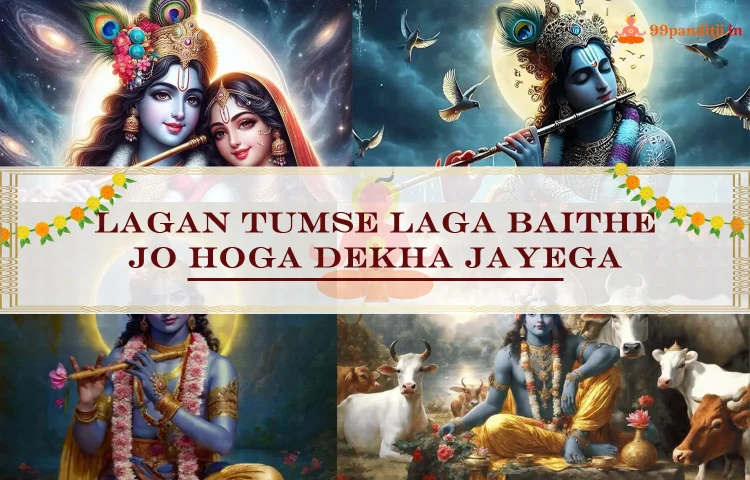
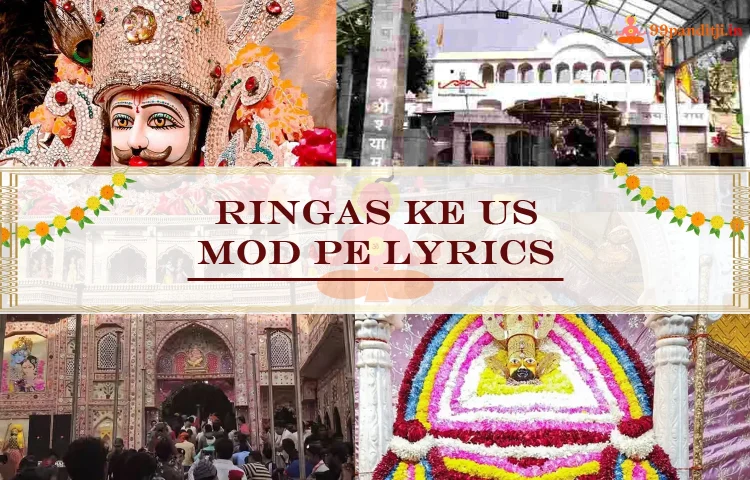


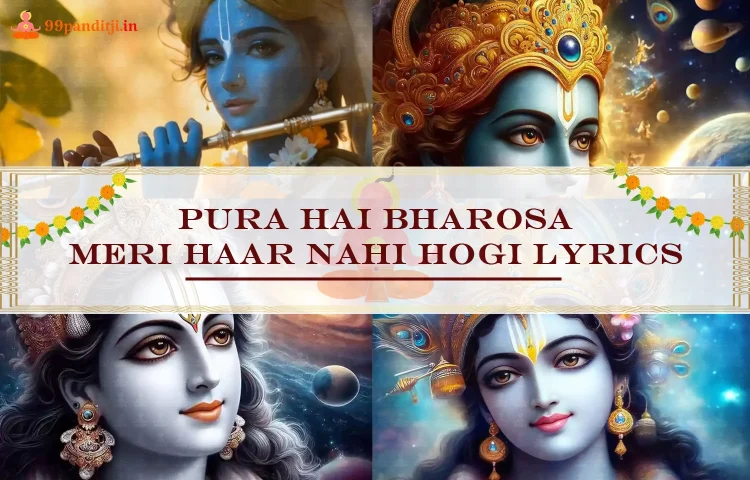


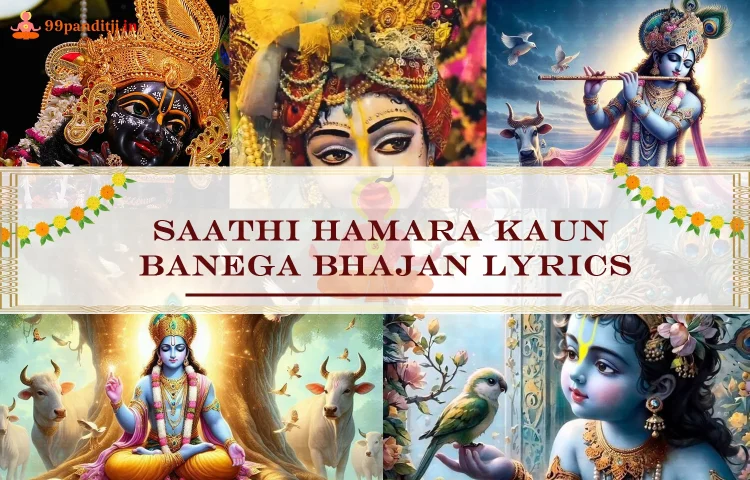


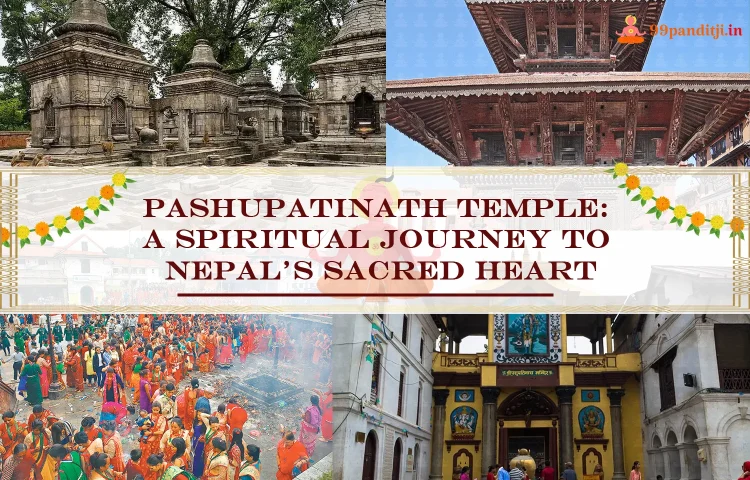






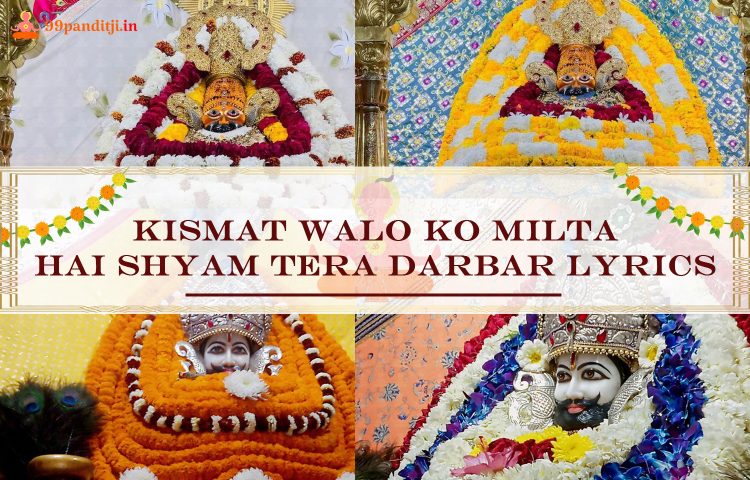

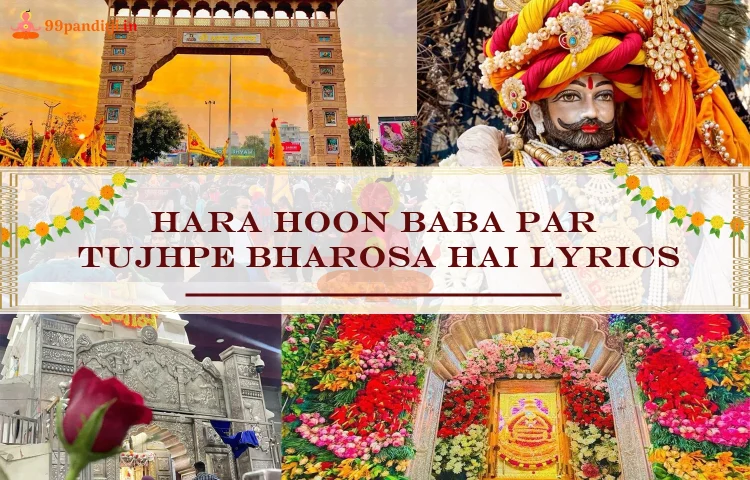
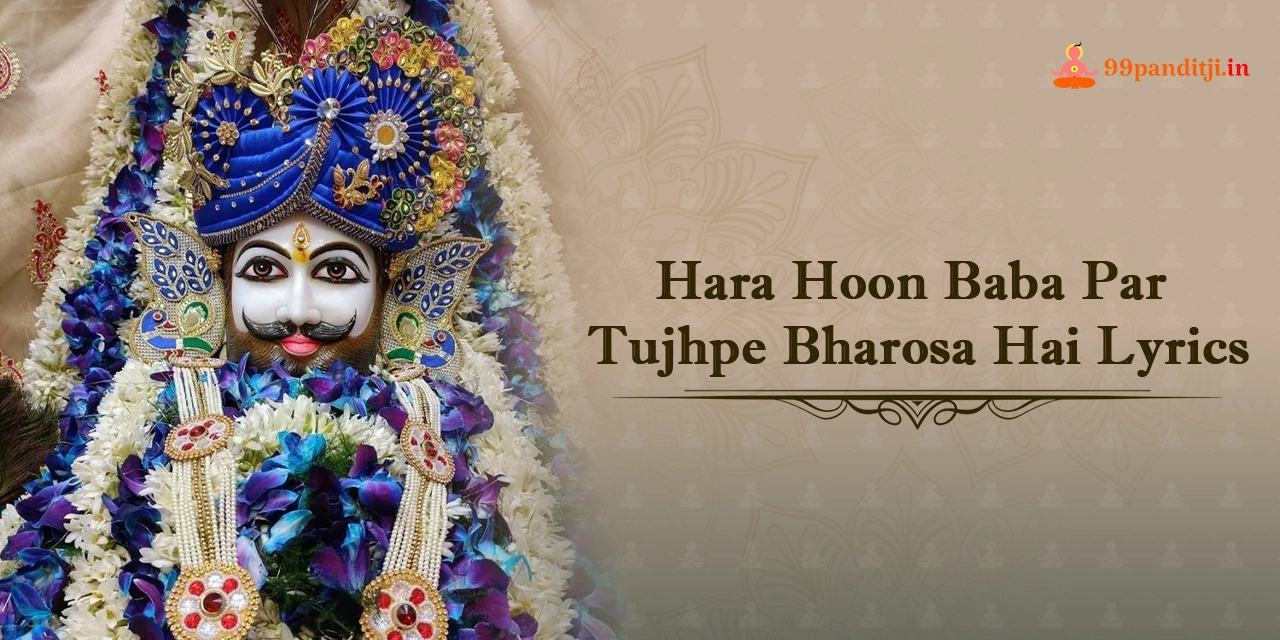
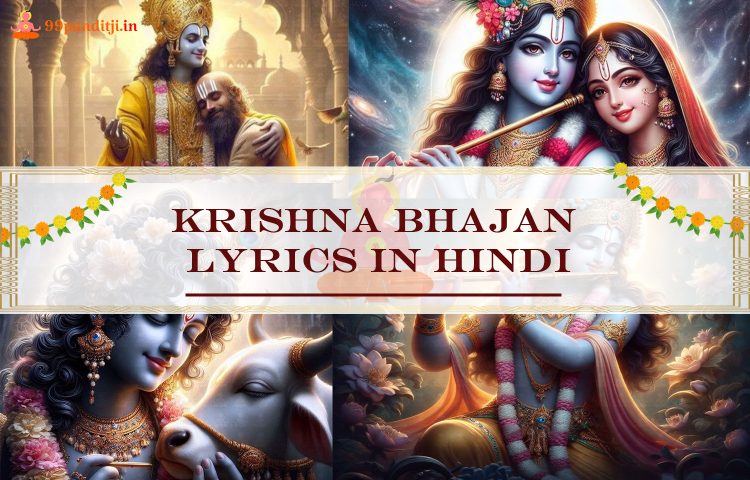
 कृष्ण भजन लिरिक्स हिंदी में
कृष्ण भजन लिरिक्स हिंदी में कृष्ण भजन लिरिक्स हिंदी में
कृष्ण भजन लिरिक्स हिंदी में Krishna Bhajan Lyrics In Hindi
Krishna Bhajan Lyrics In Hindi कृष्ण भजन लिरिक्स हिंदी में
कृष्ण भजन लिरिक्स हिंदी में Krishna Bhajan Lyrics In Hindi
Krishna Bhajan Lyrics In Hindi  कान्हा भजन लिरिक्स हिंदी में
कान्हा भजन लिरिक्स हिंदी में Kanha Bhajan Lyrics In Hindi
Kanha Bhajan Lyrics In Hindi Krishna Bhajan Lyrics In Hindi
Krishna Bhajan Lyrics In Hindi  Krishna bhajan lyrics
Krishna bhajan lyrics Radha krishan ke bhajan lyrics
Radha krishan ke bhajan lyrics Meera bhajan lyrics
Meera bhajan lyrics Krishna bhajan lyrics
Krishna bhajan lyrics Krishna bhajan lyrics in hindi
Krishna bhajan lyrics in hindi Krishna Bhajan Lyrics In Hindi
Krishna Bhajan Lyrics In Hindi भजन के मुख्य संदेश के रूप में “राधे राधे जपो” का बार-बार उल्लेख किया गया है, जो भक्तों को राधा के नाम का जप करने के लिए प्रेरित करता है, क्योंकि यह जप कृष्ण के समीप लाने का एक साधन माना जाता है। इस भजन में राधा रानी को विभिन्न रूपों में चित्रित किया गया है, जैसे वह मिश्री के स्वाद जैसी मीठी, गंगा की धार जैसी शुद्ध और सागर की तरंग जैसी अनन्त हैं। यह भजन राधा कृष्ण के अद्वितीय प्रेम और उनकी दिव्यता का बखान करता है, और भक्तों को अपने दिलों में राधा रानी के प्रति श्रद्धा और भक्ति को बढ़ाने के लिए प्रेरित करता है।
भजन के मुख्य संदेश के रूप में “राधे राधे जपो” का बार-बार उल्लेख किया गया है, जो भक्तों को राधा के नाम का जप करने के लिए प्रेरित करता है, क्योंकि यह जप कृष्ण के समीप लाने का एक साधन माना जाता है। इस भजन में राधा रानी को विभिन्न रूपों में चित्रित किया गया है, जैसे वह मिश्री के स्वाद जैसी मीठी, गंगा की धार जैसी शुद्ध और सागर की तरंग जैसी अनन्त हैं। यह भजन राधा कृष्ण के अद्वितीय प्रेम और उनकी दिव्यता का बखान करता है, और भक्तों को अपने दिलों में राधा रानी के प्रति श्रद्धा और भक्ति को बढ़ाने के लिए प्रेरित करता है। Krishna bhajan lyrics in hindi: गीत में राधा और कृष्ण के बीच की प्यारी नोंक-झोंक और कृष्ण की मस्ती को दर्शाया गया है। “सँभाल तेरी गागरी रे” का उल्लेख राधा की मटकियों से जुड़ी शरारतों को दर्शाता है, जो कृष्ण की लीलाओं का प्रतीक है। भजन में कृष्ण के मनचले स्वभाव और गोकुल के राजा के रूप में उनके चरित्र को भी प्रस्तुत किया गया है, जो लोगों के दिलों को छू जाता है।
Krishna bhajan lyrics in hindi: गीत में राधा और कृष्ण के बीच की प्यारी नोंक-झोंक और कृष्ण की मस्ती को दर्शाया गया है। “सँभाल तेरी गागरी रे” का उल्लेख राधा की मटकियों से जुड़ी शरारतों को दर्शाता है, जो कृष्ण की लीलाओं का प्रतीक है। भजन में कृष्ण के मनचले स्वभाव और गोकुल के राजा के रूप में उनके चरित्र को भी प्रस्तुत किया गया है, जो लोगों के दिलों को छू जाता है।